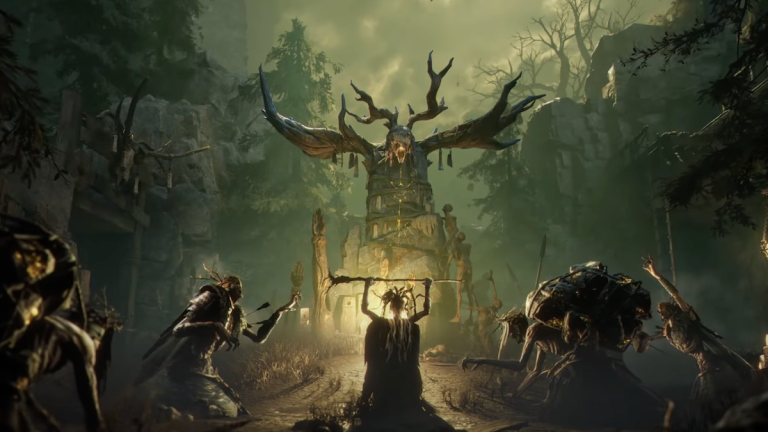Mistfall Hunter Breathes New Life Into the Hack-and-Slash Genre
Summer Game Fest 2025 wraps with hands-on looks at the genre-tweaking Mistfall Hunter and Dying Light: The Beast.

From major studios to indie developers, Summer Game Fest 2025 was an all-around celebration of video games across all platforms and scales. To wrap up our SGF 2025 experience, we spoke to the developers of two very different titles, the first-person survival horror sequel Dying Light: The Beast and the hack-and-slash extraction game Mistfall Hunter. Both due out in 2025, the two games offer completely immersive and fun experiences in their own respective ways and breathe fresh life into familiar genres.
Developed and published by Bellring Games, Mistfall Hunter is a dungeon crawler with a unique hook, with the Gyldenmist zones steadily enveloping the fantasy realms players explore. Not only does this strongly encourage players to keep moving, but it increases the value of the lootable treasure, the density of enemies, and puts a fun tension on the player if they want to delve deeper or find a Soul of Return to escape to safety. In playing the game, this fueled a palpable sense of adrenaline, not just on the urgency of moving forward, but in scouring the dungeon for an extraction point, something Bellring Games was keen to instill in players.
“We wanted to fully embrace the dynamic of risk and reward. The longer players stay in a match, the greater their potential rewards – but also the higher the risk,” Mistfall Hunter game director Hao Zhang observes. “This thinking is reflected in two key mechanics: the Extraction via the Soul of Return and the shrinking Gyldenmist zone. The bell creates a two-phase tension curve – first when players acquire the Soul of Return, and again when they ring the bell to extract. This layered pressure adds strategic depth and emotional payoff.”
Like most classic fantasy games, Mistfall Hunter has its own set of distinct character classes to choose from, but with an emphasis on fluid combat, designed with both PvP and PvE gameplay in mind. Zhang hinted that multiple seasons of additional content is being developed for the game, expanding and evolving the combat sensibilities while adding new gameplay opportunities to keep Mistfall Hunter exciting and fresh long after its launch. With this in mind, there is a noticeable focus on tactics befitting each of the character classes’ strengths that sets it apart from its hack-and-slash contemporaries.
“While Mistfall Hunter delivers fast-paced, satisfying action combat, we place even greater emphasis on tactics and strategy,” Zhang explains. “In a complex PvPvE environment shaped by shrinking zones and extraction mechanics, players can’t rely on brute force alone—they need to think carefully, plan ahead, and make smart decisions to survive and win. The game’s class diversity, along with a wide array of skills and builds, creates rich tactical depth in both team-based PvE and PvP encounters. Unlike traditional hack-and-slash games, Mistfall Hunter rewards team coordination and multi-party decision-making, where success often depends on how well you adapt to evolving battlefield dynamics.”
The third game in the series, Dying Light: The Beast serves as a direct sequel to 2015’s Dying Light, particularly to its 2016 DLC epilogue The Following. The original game’s protagonist Kyle Crane is back, after being absent from Dying Light 2, older and hungry for revenge after being experimented on for years by a villainous warlord known as the Baron. Developed and published by Techland, the creative team was excited to continue Kyle’s adventures and evolve him as a character – literally.
“We constantly kept hearing the question about the canon ending – what happened to Kyle Crane after the events of The Following. This was a clear starting point for us,” shares Dying Light franchise director Tymon Smektala. “We decided to make sure that Dying Light: The Beast plays after the events of Dying Light 2. For that, we came up with the idea that Kyle has been captured and he has been experimented on for those interim years by this guy named Baron. We realized that if you want to do something fun, unique, and something that was never really done in a survival horror game before, we could give Kyle those super, special Beast-like abilities.”
Like preceding games in the series, The Beast takes place in an open world overrun by zombies, with hostile paramilitary factions also presenting a threat to Kyle throughout the game. Though the parkour gameplay mechanics still exist, the developers crafted an experience that’s just as rich and meaningful by relocating the action from a cityscape environment to one more rural and inspired by alpine forests. More than just a change in scenery, the environmental swap helped add to the difficulty fueling the horror, even as Kyle develops new powers from his genetic experimentation.
“There are quite sizable areas in Dying Light: The Beast where you can run, but you cannot really do the parkour stuff. You cannot really use the environment to get more effective at escaping the zombies that are chasing you. We found that this adds a layer of tension and horror to the experience,” Smektala hints about new gameplay challenges players can expect. “The biggest challenge comes from us introducing a number of boss battles. This is something that we didn’t have in previous Dying Light games. Those battles are represented by Chimeras, super-big mutated monsters from the Baron’s experimentation. This is something new and quite fresh for the Dying Light series.”
Developed and published by Bellring Games, Mistfall Hunter is expected for release on Xbox Series X|S and PC in 2025. Developed and published by Techland, Dying Light: The Beast is slated to launch on PlayStation 5, Xbox Series X|S, and PC on August 22, with PlayStation 4 and Xbox One releases planned for later in 2025.
